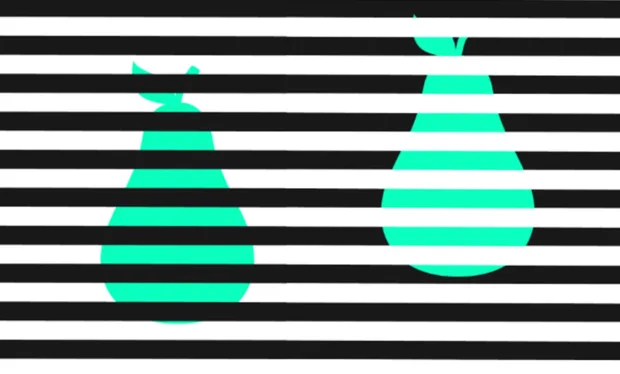You will be perplexed by THIS optical illusion.
Under the black and white lines, one pear appears darker than the other, but they are both the same colour.
This device serves as an illustration of a brightness illusion.
Visual puzzles with a similar format have been around for more than a century and follow a well-known pattern.
On a striped or graded background, two identical objects are frequently placed.
Depending on where they are placed in relation to the background, the objects seem drastically differently.

The mechanism underlying the illusions was studied by Massachusetts Institute of Technology researchers in June 2020.
They demonstrated that the phenomena is based on a peculiarity in how our brains interpret visual information.
Before visual information reaches the visual cortex of the brain, we judge the brightness of an object when we view an image.
It means that depending on the background they’re shown on, things of the same colour can appear brighter or darker than they actually are.
At the time, Professor Pawan Sinha of MIT stated, “All of our experiments led to the conclusion that this is a low-level phenomenon.
The findings provide insight into the mechanism underlying this essential process of brightness estimation, which serves as the foundation for numerous other types of visual studies.
Even while optical illusions are frequently only for entertainment, they have scientific applications as well.
Researchers are able to learn more about the inner workings of the mind and how it responds to its environment thanks to the brain puzzles.

Illusions are crucial to our study of the brain, according to Dr. Gustav Kuhn, a psychologist and authority on human perception at Goldsmiths University in London, who made this statement to the Sun earlier this month.
We sometimes take perception for granted and almost ever consider the effort that goes into simple daily actions like recognising a cup of coffee in front of you, the author added.
Visual illusions draw attention to perception flaws and give vital hints about the neurological mechanisms underlying how we see our surroundings.
It comes after this month’s debut of a scary illusion that gives the impression that the spectator is falling into a black hole.





















